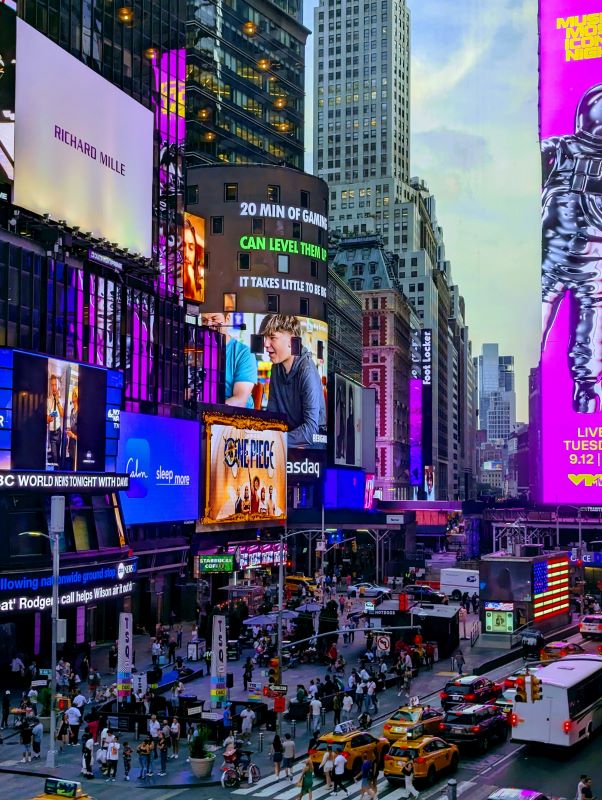- Home
- Product
- Hot
- About Us
- Service
- Solutions
- News
- Contact Us
- All
- Product Name
- Product Keyword
- Product Model
- Product Summary
- Product Description
- Multi Field Search
Views: 0 Author: Site Editor Publish Time: 2025-08-28 Origin: Site








The demand for flexible LED displays has surged across diverse industries, from retail and entertainment to transportation and architectural design. As brands and developers pursue high-definition, customizable, and dynamic display solutions, packaging technologies play a decisive role in performance, durability, and visual quality. Among these, Chip-on-Board (COB) and Surface-Mount Device (SMD) technologies dominate the market.
This article explores how ATOP’s modular LED display solutions integrate these two packaging technologies, highlighting their respective applications, advantages, and trade-offs. By understanding their impact on flexibility, resolution, and durability, integrators can make informed decisions for high-value projects.
Flexible LED displays redefine traditional flat-screen limitations, enabling curved, concave, and wrap-around installations. Whether used in shopping malls, transportation hubs, or immersive brand campaigns, flexibility supports innovative architecture while maintaining high-resolution content delivery.
ATOP’s modular designs allow displays to adapt to diverse environments, offering seamless assembly, precision alignment, and integrated visual control systems.
Global adoption of flexible LED displays is growing due to:
Increasing demand for personalized visual experiences
Rising investment in smart retail and entertainment venues
Expanding infrastructure for smart city development
However, packaging technology determines how well a display performs in these demanding environments. That’s where COB and SMD approaches differ significantly.
Surface-Mount Device (SMD) packaging places individual LED chips onto printed circuit boards (PCBs), encapsulated for protection. This widely used method offers proven reliability and scalability across multiple LED display applications.
SMD technology provides:
Wide viewing angles suitable for large indoor and outdoor displays
High color consistency for precise brand representation
Mature manufacturing processes, resulting in cost-effective scaling
Despite its popularity, SMD packaging faces constraints in flexible LED displays:
Lower resistance to physical stress and moisture
Limited pixel density for ultra-fine resolution demands
Susceptibility to damage during bending or curved installations
For conventional flat panels, SMD remains an excellent solution, but advanced installations require more robust technologies.
Chip-on-Board (COB) directly bonds multiple LED chips onto substrates, eliminating the need for discrete packaging. This results in compact, highly integrated LED clusters ideal for flexible, high-density displays.
COB packaging enhances flexible LED displays in several key aspects:
Ultra-fine pixel pitch for 4K and 8K applications
Higher durability with improved resistance to impact and scratches
Superior heat dissipation, ensuring longer operational life
Better environmental protection against humidity and dust
These attributes make COB the preferred choice for next-generation display installations in high-end commercial projects.
Unlike traditional SMD setups, COB’s compact structure reduces solder points and stress, improving adaptability to curved and irregular surfaces. ATOP’s COB-based modules are engineered for precision bending, enabling creative installations without compromising stability.
| Feature | SMD Packaging | COB Packaging |
|---|---|---|
| Pixel Density | Moderate | Ultra-fine, suitable for 4K & 8K |
| Durability | Susceptible to damage | Highly resistant to impact |
| Heat Dissipation | Limited | Excellent |
| Flexibility | Restricted in curved setups | Ideal for flexible displays |
| Moisture Resistance | Lower protection | Higher environmental sealing |
| Cost Efficiency | Lower production cost | Higher initial investment |
From a product engineering perspective, COB emerges as a superior long-term solution, especially for premium flexible LED displays where durability and image fidelity are priorities.
Luxury brands increasingly leverage curved LED installations to create 360-degree storytelling experiences. COB-based flexible displays deliver high-definition visuals without visible seams, elevating customer engagement.
Urban developers integrate flexible LED panels into public transport hubs, information kiosks, and outdoor signage. COB’s enhanced dustproof and waterproof properties make it ideal for long-term deployments.
Concert halls and theaters require displays with vivid colors, deep contrast, and reliable performance under constant assembly. COB solutions withstand frequent handling while preserving image quality.
ATOP specializes in customizable modular LED display systems designed for scalability and seamless integration. By combining COB and SMD offerings, ATOP meets the unique demands of each project:
For cost-sensitive indoor installations, SMD delivers excellent value.
For premium, high-resolution, and flexible designs, COB ensures superior visual impact.
Each ATOP module undergoes strict optical calibration and environmental testing, guaranteeing uniform brightness, smooth color transitions, and long-term reliability.

While COB offers higher performance, production scalability remains a challenge. Ongoing innovation focuses on automated bonding processes to balance cost efficiency and quality.
Future flexible LED displays may adopt MicroLED arrays, combining COB’s density with unprecedented brightness control and energy efficiency.
ATOP invests in eco-friendly packaging materials and energy-saving LED technologies, aligning product development with global sustainability goals.
Choosing between COB and SMD packaging profoundly impacts flexible LED display performance. While SMD remains cost-effective for standard applications, COB provides higher durability, pixel density, and environmental resistance, making it the optimal solution for demanding, high-value installations.
With ATOP’s advanced modular LED display systems, customers gain customized solutions engineered for seamless flexibility and outstanding visual quality. By leveraging cutting-edge COB technology alongside proven SMD options, ATOP empowers brands and integrators to deliver immersive, next-generation experiences.
How Do Dance Floor LED Displays Handle Heavy Loads and Safety Concerns?
Flexible Stage Layouts Made Easy with Ultralight Indoor LED Display Solutions
COB Vs. SMD Packaging in Flexible LED Displays: Applications And Advantages
Revolutionizing Visual Impact: 3D Naked Eye LED Display Boards Hit the Streets
China’s Modular LED Display Screens Export Boom: Key Players And Market Trends
Magnetic Hanging Systems Simplify LED Display Installation for Events
Can Flexible LED Display Panels Be Customized for Irregular Installations?
The Role of Advertising LED Display Screens with Interactive Features